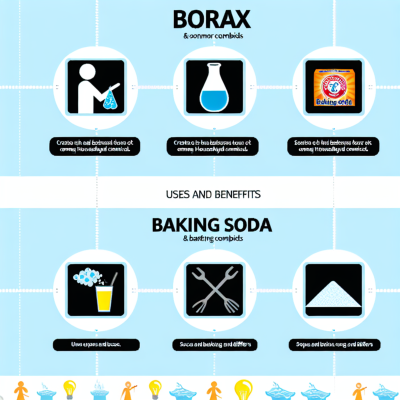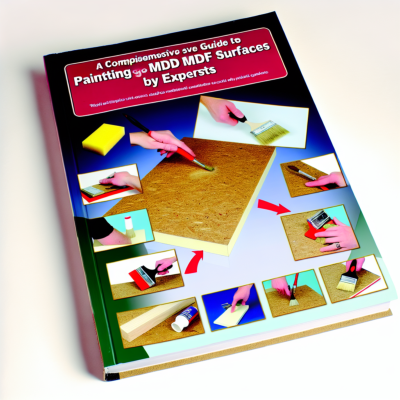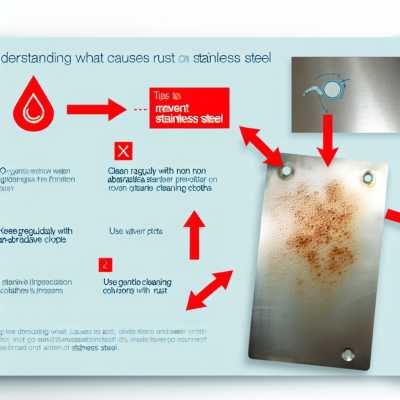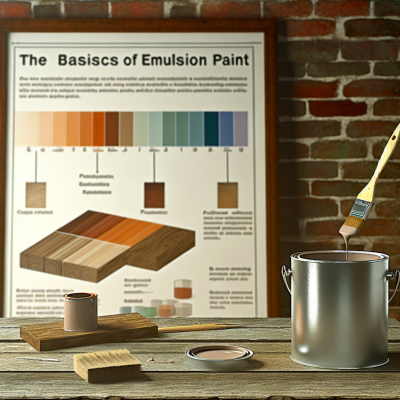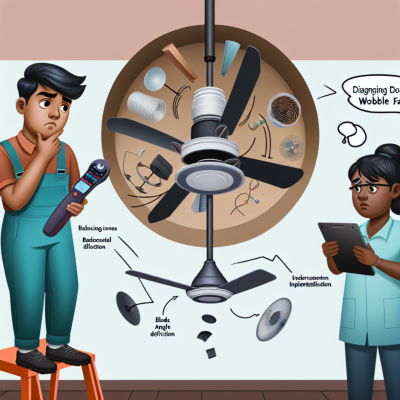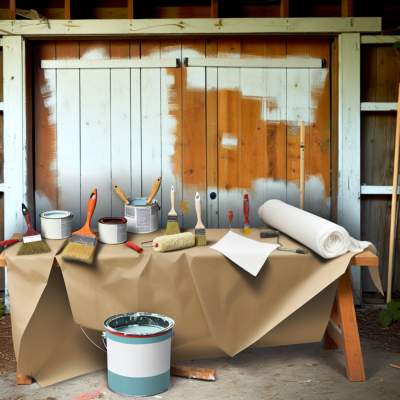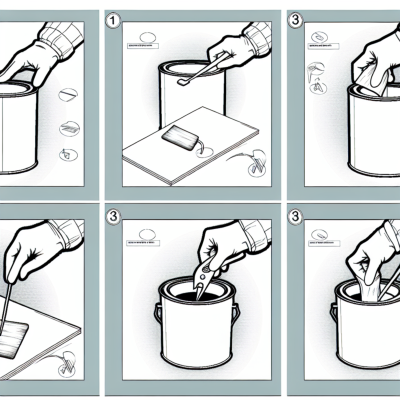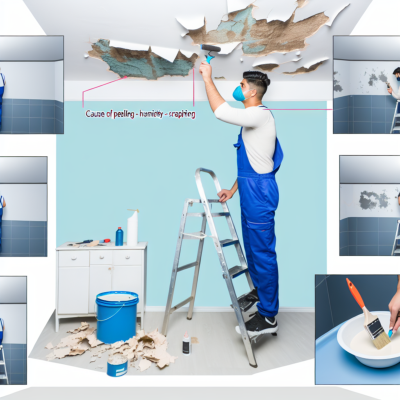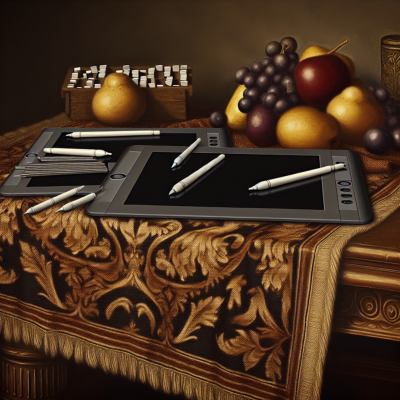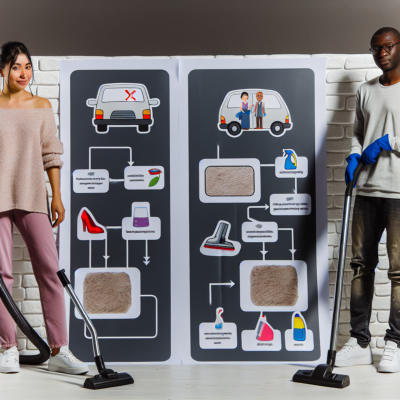Water damage is an all-too-common issue for smartphone users , whether from accidental drops in sinks or toilets, getting caught in rainstorms, or high humidity. When water seeps into phones , it can cause irreparable harm by short-circuiting delicate internal components . Symptoms can range from camera malfunctions to complete failure to power on. While professional repairs may sometimes be necessary, there are ways to protect your investment. This comprehensive guide covers best practices for reviving water-logged phones, troubleshooting specific issues like iPhone camera problems , preventative steps like waterproof cases , and maintenance for reducing future damage. With vigilance, time-tested drying techniques, and a bit of luck, even the most water-laden phone can make a full recovery.
Water damage is a common issue that smartphone users often face. Accidents happen, and phones can end up submerged in water, leading to potential damage. Whether it's dropping your phone in the toilet or getting caught in a rainstorm, water damage can be devastating. However, there are effective methods that can help salvage your phone and prevent further damage.
First and foremost, it's crucial to act quickly when your phone encounters water damage. The longer you wait, the greater the chance of irreversible damage. Immediately remove your phone from the water source and turn it off. Avoid using any buttons or shaking the device, as this may spread the water further inside.
In order to dry out your phone, carefully remove any protective case or cover. Use a soft cloth or paper towel to gently wipe off any visible water on the surface. Do not use a hairdryer or any other heat source, as this can cause further damage. Instead, let your phone air dry in a well-ventilated area for at least 48 hours.
It's important to resist the temptation to turn on your phone during the drying process. This can short circuit the internal components and cause permanent damage. After the drying period, reassemble your phone and turn it on. If your phone doesn't turn on or shows signs of malfunction, it's advisable to seek professional help from a certified technician.
Prevention is always better than a cure. Consider investing in a waterproof phone case or a water-resistant phone model to minimize the risk of water damage. Additionally, it's a good idea to regularly back up your data to ensure that important information is not lost in case of an accident.
Water damage can be a stressful situation for any smartphone user. However, by following these effective methods, you can increase the chances of saving your phone and avoiding costly repairs or replacements. Remember, acting quickly and cautiously is key when it comes to handling water damage in phones.
Initial Steps to Remove Moisture from Your Phone

If your phone has been exposed to water or any other liquid, it is crucial to act quickly to prevent further damage. Follow these initial steps to remove moisture from your phone:
- Power off your phone immediately to prevent short circuits and damage to the internal components.
- Remove the phone case and any other accessories attached to the phone.
- Gently pat dry the exterior of the phone using a soft, absorbent cloth. Avoid rubbing the phone, as this can push the liquid further into the device.
- Use a vacuum cleaner or a handheld vacuum to gently suck out any water from the ports, speakers, and microphone. Be careful not to apply too much suction, as this can damage the delicate components.
- If possible, remove the battery from the phone. This will prevent any electrical current from flowing through the device, reducing the risk of short circuits.
- Place the phone in a container filled with uncooked rice or silica gel packets. These substances will help absorb the moisture from the phone. Make sure the phone is completely submerged in the rice or silica gel.
- Leave the phone in the container for at least 24-48 hours. This will give enough time for the rice or silica gel to absorb the moisture effectively.
- After the designated time has passed, remove the phone from the container and gently shake out any remaining rice or silica gel.
- Inspect the phone for any signs of moisture or water damage. If you notice any, it's best to take your phone to a professional technician for further assessment and repair.
Remember, these initial steps can help remove moisture from your phone, but they may not guarantee a fully functional device. It is important to seek professional assistance if you are unsure or if the water damage is severe.
What is the quickest way to get moisture out of phone?
If your phone has been exposed to water or any other type of moisture, it's important to act quickly to prevent any damage. Here are some effective methods to quickly remove moisture from your phone:
1. Turn off your phone: The first step is to power off your phone immediately. This will help prevent any short circuits or further damage to the internal components.
2. Remove the SIM card and battery (if possible): If your phone has a removable battery and SIM card, take them out. This will allow for better airflow and help speed up the drying process.
3. Use absorbent materials: Get a clean, dry cloth or paper towel and gently pat your phone dry. Avoid rubbing the phone, as this can cause the moisture to spread further into the device.
4. Avoid heat sources: While it may be tempting to use a hairdryer or place your phone near a heater, avoid using direct heat sources. High temperatures can damage the internal components of your phone.
5. Rice or silica gel packets: Place your phone in a sealed bag or container filled with uncooked rice or silica gel packets. These materials can help absorb the moisture from your phone over time. Leave your phone in the container for at least 24 to 48 hours.
6. Silica gel cat litter: Another alternative to rice is silica gel cat litter. Put your phone in a sealed bag or container filled with a small amount of silica gel cat litter. This can also help absorb the moisture from your phone.
7. Vacuum cleaner: If none of the above methods are available, you can try using a vacuum cleaner. Set it to a low suction setting and gently hold it near the openings of your phone to remove any moisture.
8. Seek professional help: If your phone doesn't turn on or if you're unsure about handling the moisture removal process, it's best to seek professional help. They have the necessary tools and expertise to properly dry and repair your phone.
Remember, the key is to act quickly and avoid using your phone until it's completely dry. Moisture can cause irreversible damage to your phone's internal components, so it's important to take the necessary steps to remove it as soon as possible.
How do you get moisture out of your phone screen?
If your phone screen has been exposed to moisture, it is important to act quickly to prevent any further damage. Here are some effective methods to get moisture out of your phone screen:
| Method | Description |
|---|---|
| Rice | Place your phone in a container filled with uncooked rice. The rice will help absorb the moisture from the screen. Leave it in the rice for at least 24 hours before checking if the moisture has been removed. |
| Silica Gel Packets | If you have any silica gel packets, place them along with your phone in a sealed container. The silica gel will absorb the moisture from the screen. Leave it for a day or two before checking for any improvement. |
| Desiccant Pack | If you have access to a desiccant pack, place it in a sealed bag along with your phone. The desiccant pack will help draw out the moisture from the screen. Leave it for a few days before checking if the moisture has been removed. |
| Warm Air | Using a hairdryer or a warm air source, gently blow warm air onto the phone screen. Be cautious not to overheat the device. This method may help evaporate the moisture from the screen. |
| Do not use heat sources like an oven or microwave | It is important to avoid using heat sources like an oven or microwave to dry your phone. These sources can cause further damage to your device. |
Remember to be patient while trying these methods. It may take some time for the moisture to completely evaporate from the phone screen. If none of these methods work, it is recommended to seek professional help or contact the manufacturer for further assistance.
What absorbs moisture from a phone?
When it comes to water damage in phones, time is of the essence. The longer a phone is exposed to moisture, the more damage it can cause. One effective method for handling water damage is to absorb the moisture from the phone.
There are several materials that can absorb moisture from a phone:
1. Rice: Rice is a commonly used material for absorbing moisture. Place the phone in a container filled with uncooked rice and leave it for at least 24 hours. The rice will absorb the moisture from the phone.
2. Silica gel packets: Silica gel packets, often found in shoe boxes or electronic packaging, are another effective option. Place the phone in a container with silica gel packets and leave it for a day or two. The silica gel will absorb the moisture from the phone.
3. Cat litter: Cat litter, specifically the non-clumping type, can also absorb moisture from a phone. Place the phone in a container filled with cat litter and leave it for a day or two. The cat litter will absorb the moisture from the phone.
4. Desiccant packs: Desiccant packs, commonly used to absorb moisture in food packaging, can also be used for phones. Place the phone in a container with desiccant packs and leave it for a day or two. The desiccant packs will absorb the moisture from the phone.
It's important to note that while these materials can absorb moisture from a phone, they may not always be effective in completely fixing water damage. If your phone has been exposed to water, it's still recommended to seek professional help or consult the manufacturer for further assistance.
Disclaimer: The information provided in this article is for educational purposes only. It's always best to consult a professional for specific advice tailored to your situation.
Troubleshooting Camera Issues Due to Water Damage

If your phone has suffered from water damage, it is common for the camera to be affected. Water can seep into the camera lens and damage its internal components, resulting in blurry or distorted images, or even a completely non-functioning camera.
When troubleshooting camera issues caused by water damage, there are a few steps you can take to potentially resolve the problem:
1. Turn off the phone immediately: If your phone has come into contact with water, it is crucial to turn it off as soon as possible. Continuing to use the phone while it is wet can cause further damage to the camera and other internal components.
2. Remove the battery (if possible): If your phone has a removable battery, take it out to prevent any potential short circuits. This can help protect the camera and other parts of the phone from further damage.
3. Do not try to dry the phone with heat: While it may be tempting to use a hairdryer or place the phone near a heater to dry it out quickly, this can actually cause more harm than good. Excessive heat can damage the camera and other sensitive components. Instead, gently pat the phone dry with a soft cloth and let it air dry in a cool, dry place.
4. Try using the camera in a safe mode: If your phone has a safe mode, try switching to it to see if the camera works properly. Safe mode disables any third-party applications, which may be causing conflicts with the camera function. If the camera works fine in safe mode, a third-party app may be the culprit.
5. Reset the camera app: Sometimes, the camera app itself may be experiencing issues due to water damage. Go to the phone's settings, find the camera app, and clear its cache and data. This can help resolve any software-related problems that may be affecting the camera's performance.
If none of these troubleshooting steps resolve the camera issues caused by water damage, it may be necessary to seek professional help. A certified technician will have the expertise to diagnose and repair any hardware damage that may have occurred due to water exposure.
Remember, prevention is always better than cure. To avoid water damage to your phone's camera, it is important to take precautionary measures such as using a waterproof case or keeping the phone away from water sources.
How do you repair a camera with water damage?
If your camera has been damaged by water, it is important to act quickly to minimize further damage and increase the chances of successful repair. Here are some steps you can take to repair your camera with water damage:
| 1. | Remove the battery and memory card: | As soon as you notice water damage, turn off the camera and remove the battery and memory card. This will help prevent any short circuits and further damage to the internal components. |
| 2. | Dry the camera: | Gently pat the camera dry with a soft cloth or tissue. Avoid using excessive heat, such as a hairdryer, as it can damage the delicate components of the camera. |
| 3. | Use silica gel packets: | Place the camera and its components in a sealed bag with silica gel packets. These packets help absorb moisture and can help dry out the camera. |
| 4. | Wait for at least 24 hours: | Give the camera enough time to dry out completely. Do not rush to turn it on, as residual moisture can still cause damage. |
| 5. | Test the camera: | After waiting for 24 hours, insert a fully charged battery and a memory card into the camera. Turn it on and check if it is functioning properly. Pay attention to any unusual behavior or error messages. |
| 6. | Seek professional repair: | If the camera is still not working or if you notice any issues, it is recommended to seek professional repair services. They have the expertise and specialized tools to diagnose and fix water damage in cameras. |
Remember, water damage can be unpredictable and may cause irreversible damage to your camera. It is always better to prevent water damage by keeping your camera away from water sources and using protective cases when necessary.
What to do if water gets in your camera?
Water damage can be a nightmare for any camera owner. Whether it's a small splash or a complete submersion, water can cause irreversible damage to the delicate electronic components of your camera. However, if you act quickly and follow these steps, there is a chance that you can salvage your camera and prevent further damage.
1. Remove the battery and memory card
The first thing you should do if water gets in your camera is to remove the battery and memory card immediately. This will help prevent any short circuits and further damage to the internal components. Make sure to do this as soon as possible to minimize the risk of corrosion.
2. Dry the camera
After removing the battery and memory card, gently shake off any excess water from the camera. Next, use a soft, absorbent cloth or towel to carefully dry the exterior of the camera. Avoid rubbing or applying excessive pressure, as this can push water deeper into the device.
Note: Do not use a hairdryer, as the heat can damage the internal components.
how to remove rust from stainless steel
3. Remove as much moisture as possible
To remove any remaining moisture from the camera, place it in a container filled with uncooked rice or silica gel packets. These materials will help absorb the moisture and speed up the drying process. Leave the camera in the container for at least 24 hours.
4. Test the camera
After the drying period, insert a fully charged battery and memory card into the camera. Turn it on and check if it functions properly. Pay attention to any unusual sounds or error messages. If the camera doesn't work or shows signs of malfunction, it may require professional repair.
5. Seek professional help if needed
If your camera doesn't work despite following these steps, it's best to consult a professional camera repair service. They have the necessary expertise and equipment to assess the extent of the damage and possibly repair your camera.
Remember, prevention is always better than cure. To avoid water damage in the future, be cautious when using your camera near water sources and consider investing in a waterproof camera case or bag. Taking proactive measures can save you from the stress and expense of dealing with water damage.
Can water damage affect your camera?
Water damage can have a significant impact on the functionality of your camera. When water enters the camera, it can cause corrosion and short circuits, leading to permanent damage. The camera lens may also be affected, resulting in blurry or distorted images.
If your camera has been exposed to water, it is crucial to act quickly to minimize the damage. Here are some steps you can take:
- Immediately remove the battery and memory card from the camera.
- Gently dry the exterior of the camera using a soft cloth.
- Avoid using heat sources such as hair dryers, as they can cause further damage.
- Place the camera in a bag of uncooked rice or silica gel packets to help absorb moisture.
- Leave the camera in the rice or silica gel for at least 48 hours to allow it to dry out.
- After the drying period, reinsert the battery and memory card and test the camera.
If the camera does not function properly after following these steps, it is recommended to take it to a professional for repair. Attempting to repair it yourself may cause further damage.
Prevention is always better than cure. To protect your camera from water damage, consider using a waterproof camera case or bag when shooting in wet conditions. Additionally, avoid exposing your camera to excessive moisture or humidity.
In conclusion, water damage can have a detrimental effect on your camera. By taking immediate action and following the necessary steps, you may be able to minimize the damage and potentially save your camera.
Maintenance and Prevention Tips for Phone Water Damage
Water damage is a common issue faced by smartphone users, but it can be avoided with proper maintenance and preventative measures. Here are some tips to help keep your phone safe from water damage:
- Keep your phone away from water sources: Avoid using your phone near bodies of water such as pools, sinks, or bathtubs. Accidental spills or drops can quickly lead to water damage.
- Use a waterproof phone case: Investing in a waterproof phone case can provide an extra layer of protection. These cases are designed to keep water out and can be a lifesaver if your phone accidentally gets submerged.
- Avoid excessive humidity: High levels of humidity can damage your phone over time. Avoid leaving your phone in humid areas, such as bathrooms, or using it while sweating excessively.
- Be cautious in extreme weather conditions: Whether it's heavy rain or scorching heat, extreme weather conditions can be harmful to your phone. Keep it protected in a bag or pocket when outdoors in such conditions.
- Regularly check for leaks: Inspect your phone regularly for any signs of water damage, such as condensation under the screen or in the charging port. If you notice any issues, take immediate action to prevent further damage.
- Avoid DIY repairs: If your phone does get water damaged, avoid attempting to fix it yourself. Instead, take it to a professional technician who has experience in handling water damage repairs.
- Backup your data: In the unfortunate event of water damage, your phone may become unusable. It's essential to regularly back up your data to prevent losing important files and documents.
- Consider insurance or warranty options: Some phone manufacturers offer insurance or warranty plans that cover water damage. It's worth considering these options to provide financial protection in case of accidents.
By following these maintenance and prevention tips, you can greatly reduce the risk of water damage to your phone. Remember, prevention is always better than cure when it comes to protecting your valuable device.
How can I protect my phone from water damage?
Water damage is a common problem that can ruin a phone and render it useless. However, there are several steps you can take to protect your phone from water damage:
1. Use a waterproof case: Investing in a waterproof case is one of the best ways to protect your phone from water damage. These cases provide a barrier against water and prevent it from seeping into your phone.
2. Avoid exposing your phone to water: It's important to be mindful of where you place your phone and avoid exposing it to water. Keep your phone away from sinks, pools, and other water sources to minimize the risk of water damage.
3. Be cautious in humid environments: Humidity can cause moisture to build up in your phone, leading to water damage. Be cautious when using your phone in humid environments and consider using a dehumidifier if necessary.
4. Keep your phone away from liquids: It's important to keep your phone away from any liquids, including drinks and cleaning solutions. Accidental spills can quickly lead to water damage, so always be mindful of your surroundings.
5. Be extra careful near water: If you're planning to be near water, such as at the beach or by the pool, take extra precautions to protect your phone. Keep it in a sealed bag or leave it in a safe place to minimize the risk of water damage.
6. Consider using a waterproof pouch: If you don't have a waterproof case, consider using a waterproof pouch to protect your phone. These pouches provide a barrier against water and can be a temporary solution if you're in a water-prone environment.
7. Regularly check for signs of water damage: It's important to regularly check your phone for signs of water damage, such as a foggy screen or malfunctioning buttons. Catching water damage early can help prevent further damage and increase the chances of successful repair.
By following these tips, you can greatly reduce the risk of water damage to your phone and ensure its longevity.
How can we reduce water damage?
Water damage can be a serious issue for phones, causing irreversible damage to internal components and leading to malfunction or even complete failure. However, there are steps that can be taken to reduce the risk and minimize the impact of water damage.
Here are some effective methods for reducing water damage:
| 1. Avoid exposing your phone to water | Avoid using your phone in or near water sources such as pools, bathtubs, or sinks. Keep it away from liquids to prevent accidental spills or submergence. |
| 2. Use a waterproof case or pouch | Invest in a high-quality waterproof case or pouch to provide an extra layer of protection against water damage. These cases are designed to keep water out and can greatly reduce the risk of damage. |
| 3. Be cautious in humid environments | Humidity can also pose a risk to your phone. Avoid using your phone in extremely humid environments, such as steam rooms or saunas, as the moisture in the air can seep into the device and cause damage. |
| 4. Keep your phone away from water sources | When not in use, store your phone in a safe and dry location away from water sources. This can help prevent accidental exposure to water and minimize the risk of damage. |
| 5. Act quickly if your phone gets wet | If your phone does come into contact with water, act quickly. Immediately power it off, remove the battery (if possible), and dry it thoroughly with a soft cloth or towel. Avoid using heat sources such as hair dryers, as they can cause further damage. |
| 6. Use desiccants or rice to absorb moisture | If your phone gets wet, you can try using desiccants (such as silica gel packets) or uncooked rice to absorb moisture. Place the phone in a sealed bag with the desiccants or rice for at least 48 hours to help remove the moisture. |
| 7. Seek professional help if needed | If your phone still doesn't work properly after attempting to dry it out, it's best to seek professional help. A trained technician may be able to repair the damage and salvage your phone. |
By following these precautions and taking immediate action when necessary, you can greatly reduce the risk of water damage to your phone and help extend its lifespan.
As we have seen, water damage is an ever-present threat for smartphone owners. However, with vigilance and prompt action, there is often hope for reviving even severely waterlogged devices. If your phone suffers a dunking, remember to immediately power it off , dry it with absorbent materials , avoid heat, and give it adequate time before testing. Should issues persist, don't hesitate to enlist professional technicians to troubleshoot problems like camera malfunctions . And importantly, be proactive by investing in protective cases suited for your lifestyle and regularly backing up data to minimize future heartache. While accidents happen, a bit of planning and some rice on hand can go a long way toward restoring functionality when water gets in your phone .
Read more:
- How to paint aluminium
- open a can without a can opener
- mdf paint
- how to get slime out of clothes
- how to get rid of paint smell
- pinata ideas
- how to get sunscreen out of fabric
- things to do in summer
- washing soda vs baking soda
- paint peeling in bathroom
- paint for upvc doors
- mould resistant paint
- painting after removing wallpaper
- things to do as a couple
- sandpaper grades
- baking soda and vinegar cleaning
- how to hack key fob doors apartment
- how to paint a garage door
- can you paint laminate floors
- oil based paint for walls
- what is emulsion paint
- how to clean gloss paint brushes
- laundry detergent substitute
- how to antique a mirror
- how to get a bird out of your house
- how to remove rust from stainless steel
- how many fixer upper families still live in their homes
- apple tablet with pen
- how to clean white fabric shoe
- painting pine furniture
- how to test for lead paint
- top selling vintage items on etsy
- best places to live in texas
- The Magnificent Waco Castle
- how to balance a ceiling fan

